Champions of Change Blog
The Power of Education to Create the Next Generation of Conservation Leaders
Posted by on March 24, 2014 at 2:58 PM EDT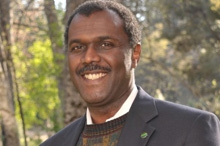
Stephen H. Lockhart is being honored as a Next Generation of Conservation Leaders Champion of Change.
Why must we create the next generation of Conservation Leaders? A sustainable future for our planet requires that our young people both know and love the natural world. A connection with nature, if created early, will endure and deepen over a lifetime. Certainly this was my experience.
Introduced to nature as a Boy Scout in a segregated troop in the Midwest, my time spent outdoors was invigorating, liberating, and educational. It instilled a sense of personal confidence as well as a responsibility to protect these amazing natural resources. These experiences created an abiding love and respect for the natural world and have inspired me to promote opportunities for the next generation to know, to learn and to steward the environment.
Education plays a key role in creating conservation leaders and ranks among our nation’s highest priorities. Public lands offer an opportunity to engage in place-based, lifelong learning that improves academic performance, promotes a more sustainable environment, enhances dialogue about the democratic principles at the core of our society, and encourages stewardship. It is provided by agencies like the National Park Service (NPS) and by partner organizations and volunteers.
My passion is to foster environmental literacy to sustain our planet. Coincidentally, this is the mission of NatureBridge, one of the largest educational partners of the NPS and why I serve on their Board. Over 42 years, NatureBridge has provided residential science programs in national parks to more than 1 million students and now educates 30,000 children and teens each year.
My son was one of these students, and I witnessed the power of such programs to open the hearts and minds of young people to the wonder of science in nature. The benefit to society of developing leadership, stewardship, and a sense of personal responsibility for the environment cannot be overstated. Interestingly, four current park superintendents are alumni of NatureBridge programs who acknowledge that the seed of interest was planted at that early stage.
E. O. Wilson suggests that, as humans, we need nature to fully realize our physical and emotional potential. I could not agree more. The potential physical and emotional health benefits of access to our public lands are undisputed, but regrettably the full impact has yet to be realized. By encouraging young people to access our public lands and engage in active learning, we help them maintain the health of the planet and themselves. This will do more than I and my physician colleagues ever could simply treating illness.
America is an increasingly diverse society that struggles to find a personal connection with the outdoors. Considering the daily challenges that many families in underserved communities face involving economic stability, educational achievement and social justice, how can becoming a conservation leader possibly seem relevant?
I argue that it is not only relevant, but essential for every race and culture, for urban and rural inhabitants alike. President Obama, through his My Brother’s Keeper Program, recognizes the need to engage young black men in our society. SF Achievers — a program focused on black male teens — provides mentorship, supports academic performance, and provides an environmental science experience with NatureBridge. Naje’e Brown, a participant, said: “I think the environment affects people’s mind-set. Yosemite is a really beautiful place, and once you go there, you’ll always have it in your heart.”
As someone who was once a young black male teen, I know exactly what he means.
But so would every other young person, given the opportunity.
Stephen H. Lockhart, M.D.,Ph.D. is a Vice President and Regional Chief Medical Officer of Sutter Health and a Board member of NatureBridge, the National Parks Conservation Association, and REI.
Learn more aboutChallenges Give Rise to Opportunity
Posted by on March 24, 2014 at 2:55 PM EDT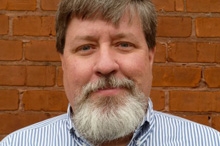
Bill Hodge is being honored as a Next Generation of Conservation Leaders Champion of Change.
Change, or transformation if you will, does not come easy if it is real. The kind of change that can influence lives and shift generations only comes from great challenges. Champion of Change is an honor that I am thrilled to carry, and yet, a commitment for the work ahead. To be a true champion of a movement means to not achieve a goal, but to drive a shift in how we define goals.
The challenge that sits at the core of my work today is to build a tribe from a new and ever more diverse community of young people, and to connect them to the magic of the protected public lands across their country, and in their backyards. But that challenge is not where my Wilderness journey began.
From the first time my parents took me camping, I was hooked on public lands. We loaded up a used pop-up camper and took off for the Pisgah National Forest in North Carolina. One of the first hikes I can remember was in the Linville Gorge Wilderness. The idea of designated Wilderness was beyond my mind at the time, but I knew that the place was rugged and awe inspiring; special. I had no idea that Wilderness as a designation was only ten years old in practice, but decades in the making. I certainly did not know then that the Linville Gorge was only one of three areas in the east at the time, being protected in its natural state, ‘where man is but a visitor, and does not remain’.
Throughout my life, public lands have been my refuge from an ever more chaotic pace. It was not until just five years ago, however, that the protection of public lands became my life’s vocation.
In 2009 I began to volunteer with Tennessee Wild, a campaign to add 20,000 acres of Wilderness designation to the Cherokee National Forest near my home. Throughout my work, the concept of struggling stewardship efforts for our public lands and protected Wilderness kept creeping into the conversation. Trail systems had long fallen into the hands of volunteers as federal budgets for the land management agencies shrank. The volunteers serving our public lands are an amazing community, but their numbers have mainly been limited to those retired or those few that are willing to give of their weekends.
The challenges of meeting the stewardship needs of our public lands met opportunity while attending a youth and diversity workshop held by the Appalachian Trail Conservancy. There, I met some amazing young people from the urban youth engagement efforts of Groundwork USA. To hear and experience the disconnect that these kids had from their public lands; I knew that the mission was clear. Connect this generation back to public lands and public service through Wilderness stewardship, and future generations will follow.
Since 2010, the year of our launch, Southern Appalachian Wilderness Stewards (SAWS) has been working to serve the designated Wilderness of the southeast while also connecting a new generation (our tribe) to public lands and public lands service. We have grown into a social enterprise through the creation of conservation jobs (23 in 2013), and a volunteer pipeline (over 8,000 volunteer hours in 2013). We partner to train volunteers and conservation leaders through a nationally recognized Wilderness Skills Institute, and provide numerous opportunities for continued growth of our conservation community.
The need for public engagement in service to public lands is the challenge, and connecting a new generation to the natural world around them is the opportunity for a real win-win solution we gladly accept.
Bill Hodge is the Director of Southern Appalachian Wilderness Stewards (SAWS), a program of The Wilderness Society. Bill also serves on the board of the National Wilderness Stewardship Alliance and is a recipient of the Bob Marshall Award as external champion of Wilderness from the United States Forest Service and the International Journal of Wilderness.
Learn more aboutSharing a Vision, Working Together, Saving Lake Erie
Posted by on March 24, 2014 at 2:09 PM EDT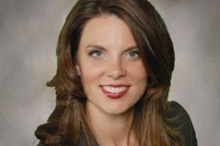
Carrie Vollmer-Sanders is being honored as a Next Generation of Conservation Leaders Champion of Change.
On average, farmers have 40 chances in their lifetime to grow a crop. Each year we make small adjustments based on past years’ experiences, current weather conditions and new technology. Multi-generational farm families like mine pass along what we’ve learned. We work with our parents and sometimes parents’ parents to make sure that farming can be a livelihood for our children and our children’s children. When my dad makes a change to the equipment he uses, my husband and I make the same change, because we farm together. When we add technology to farm smarter, it also helps my dad farm smarter. We make these changes to our family farm business after discussions with our trusted consultants, like our soil, seed, chemical, and fertilizer advisers.
Here in the Western Lake Erie Basin, harmful algal blooms is a water quality topic of immense concern. Farmers have taken a number of actions to reduce fertilizer runoff, but too much is still leaving our fields and entering streams and lakes. This lost fertilizer, mainly phosphorus, is one of the main contributors to these harmful algal blooms.
When I began working for The Nature Conservancy over three years ago, we started by talking with farmers and their most trusted advisers about how we could make sure that fertilizer grows crops, not algae.
When a small group of individuals — representing agri-business, research and The Nature Conservancy— began talking about solutions we were not bound by a plan, but we had the same basic end goal: grow enough food and have clean water to drink for the 9 billion people on the planet in 2050. With the teamwork of the agricultural, government, research and conservation communities in the Lake Erie basin, we think we have found some solutions that will achieve lasting conservation, because it is good business for farmers and for Lake Erie.
The 4R Nutrient Stewardship Certification Program, developed by the 4R Advisory Committee and now managed by the Nutrient Stewardship Council, was created to be a consistent, recognized program highlighting agricultural retailers’ nutrient stewardship efforts. The program ensures that social, environmental and economic 4R nutrient management sustainability goals (applying the Right source of fertilizer at the Right rate at the Right time, in the Right amount) are adopted, which will lead to long term positive impacts on water quality in Lake Erie. This voluntary, private third party evaluation of the farmer’s fertilizer and crop advisers recognizes their efforts to improve water quality.
This solution would not have happened without the shared vision of so many in agriculture and conservation working together with an open mind and determined heart. Being honored with the White House Champion of Change award is humbling, especially knowing that our progress is due to having a dedicated, solutions-oriented, and visionary team.
Only when key stakeholders agree that water quality is a top priority for maintaining the local economy, culture, and biodiversity of the area, will we achieve lasting conservation for all life in Lake Erie. Visit nature.org/wleb to learn more about our work and partnerships to improve water quality in the Western Lake Erie Basin. Like our work in this watershed, The Nature Conservancy works throughout the world to protect Earth’s fresh water for the future through, science-based, practical solutions.
Carrie Vollmer-Sanders is the Western Lake Erie Basin Project Director for The Nature Conservancy and chairs the Nutrient Stewardship Council. She and her family grow grain in Northwest Ohio.
Learn more aboutConnecting Veterans with Montana’s Wilderness Heritage
Posted by on March 24, 2014 at 2:05 PM EDT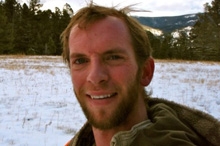
Tristan Persico is being honored as a Next Generation of Conservation Leaders Champion of Change.
At an early age, my father started bringing me to wild places to learn and explore. Dad instilled in me a sense of adventure; I always wanted to know what was around that next bend in the trail or what was over that next ridge. This is where my lifelong love of the outdoors began.
At age eighteen, I joined the United States Air Force and went through training to become an Explosive Ordnance Disposal Technician. Of the twenty Airmen who started the training with me, I was one of three to complete it. In 2009, I deployed to southern Afghanistan. While I was there, I constantly longed for the peace and beauty of Montana’s wilderness. Afghanistan was anything but peaceful and it was on a Saturday afternoon in September that tragedy struck. My closest friend was killed by an enemy attack.
When I returned home to Montana I was lost and devastated and the only place I could find peace was in the wilderness. I received an honorable discharge in 2011 and began to work towards the next chapter of my life. I soon found myself pursuing a degree in Parks, Tourism, and Recreation Management at the University of Montana and became involved with the Montana Wilderness Association.
The Montana Wilderness Association (MWA) works with communities to protect Montana's wilderness heritage, quiet beauty and outdoor traditions, for present and future generations. Established in 1958, MWA is the nation’s oldest state-based grassroots wilderness advocacy organization and was instrumental to the passage of the Wilderness Act of 1964. The Montana Wilderness Association led the charge to create each of the 15 Wilderness areas in the state and secure Wild and Scenic designations for suitable stretches of the Flathead and Missouri rivers. Today, MWA continues to work tirelessly on behalf of Montana’s best places to hike, hunt, fish, and ride horseback by engaging new partners and communities to guarantee a wild future for iconic treasures like the Rocky Mountain Front, where the reefs and ramparts of the Continental Divide plunge down to meet the prairie.
In the spring of 2013, I joined forces with Zack Porter, MWA’s NexGen Wilderness Leaders Program Director. Together, we created a Veteran Outreach Program, which provides Montana’s veteran community with positive wilderness experiences. Through backcountry trips, stewardship projects, and educational opportunities on current wilderness policies and affairs, we are helping veterans connect with each other and Montana’s wilderness heritage.
It is common knowledge that Post Traumatic Stress Disorder afflicts many veterans returning from service in Afghanistan and Iraq, as well as veterans from previous wars. What many people do not realize is that one of the hardest parts of coping with PTSD for our service men and women once they leave the military is no longer being around people with the same history and experiences in a conflict zone. Wilderness is the perfect place for veterans to get together, tell stories around the campfire, and be around peers who understand what they have been through.
In the same way that my dad and other mentors encouraged me to develop a sense of awe for wild country and learn the skills of backcountry travel, I am proud to work with Montana’s veterans to build a community of conservation champions for the 21st century.
Tristan Persico, Veterans Outreach Coordinator for the Montana Wilderness Association, lives in Missoula, Montana with his wife Lindsay and stepdaughters, Briger and Quincy. For more information about the Montana Wilderness Association Veteran Outreach Program, please contact Tristan Persico at tpersico@wildmontana.org.
Learn more aboutEngaging Americans in the Challenge of Climate Resilience
Posted by on March 24, 2014 at 2:01 PM EDT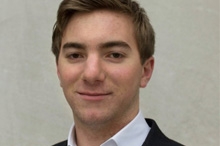
Parker Liautaud is being honored as a Next Generation of Conservation Leaders Champion of Change.
I believe that climate change is the defining challenge of my generation, and therefore I am honored to have been selected as a White House Champion of Change for Engaging the Next Generation of Conservation Leaders.
Global warming is caused by human activities — the science is settled. (NASA has compiled a web page dedicated entirely to clearly demonstrating the strong consensus.)
The effects of climate change are being felt by the American people, and in the future we can expect more severe droughts, wildfires, flooding, and storms. These changes have serious impacts on our economy, our public health, and the physical safety of our families. They put us all at risk, no matter where we live.
It is our collective national responsibility to urgently address climate change. No individual organization or person — whether a teenager, a corporation, or a Nobel prize-winning researcher — can single-handedly solve the challenge we face together. However, a unified nation that is fiercely committed to action can build on previous efforts by supporting policies that make all of our communities more resilient, today and in the future.
In order for this to be possible, clear and accurate communication of the science of climate change to the public is critical. Every American deserves to understand how their family and community are being impacted. One of the many ways this can be achieved is by harnessing new technology to bring people closer to the science and more engaged in an understanding of the ways in which the world is changing. This is something I have tried to do through my own recent efforts.
After my third expedition to the North Pole, I partnered with Willis Group, a global insurance and reinsurance broker, and created the Willis Resilience Expedition. During this Antarctic expedition, which took place in November-December 2013, we undertook field work for three climate research programs (which aimed to help further develop a technique for studying the climate system, and test a new Antarctic weather station), then trekked over 350 miles to the South Pole without external assistance. In addition to the scientific goals, the expedition aimed to communicate the climate challenge accurately to people across the country and around the world.
We reached the South Pole on December 24th, 2013, and in doing so set two records (the fastest human-powered trek from the coast of Antarctica to the South Pole, and, at the time, the youngest male to trek to the South Pole). The purpose of the record attempts was to create a mechanism through which to engage people in the need to set ambitious goals in addressing such a broad challenge, whether or not we actually achieve them.
Through the expedition, we created a daily 60-minute live broadcast that emanated from a purpose-built studio in London. Each show focused on a particular aspect of climate change or resilience (such as the impacts on businesses, the role of technology, or the economic benefits of addressing environmental issues), and engaged people in the issues that are affecting (and will affect) their communities. Each show also tracked the expedition’s progress and broadcasted live video from Antarctica. In all, there were 25 in-depth discussions with participation from leading experts in policy, science, industry, and other fields.
I have much to learn, and am deeply grateful for this opportunity. I am confident that we can collectively solve the challenges presented by a changing climate.
Parker Liautaud is a polar explorer and climate change campaigner studying Geology & Geophysics at Yale University. He recently led the Willis Resilience Expedition, an Antarctic expedition which reached the South Pole on December 24th, 2013.
Learn more aboutUrban Environments Provide Context and Inspiration for 21st Century Conservation Leaders
Posted by on March 24, 2014 at 1:45 PM EDT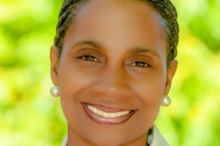
Na’Taki Osborne Jelks is being honored as a Next Generation of Conservation Leaders Champion of Change.
After living for five years in Louisiana’s Cancer Alley Corridor, my inspiration to help create healthy and sustainable communities came from a deeply personal place. I connected the dots between the dirty air, bad-tasting and smelling water, and degraded landscapes of this urban place and my mother’s diagnosis with cancer. Although there is no definitive proof that our exposure to pollution was the cause of her illness, that was my call to action to channel my passion, education, and training into ensuring a just and sustainable world for all.
Armed with a personal mission to be a change agent, I found opportunity in an unlikely place while studying at Spelman College and the Georgia Institute of Technology in Atlanta, Georgia. As a volunteer with the Carver Hills Sustainable Communities Initiative, I veered slightly off my chemistry and civil engineering path to develop community-based environmental stewardship and restoration efforts because that is what the community needed. Many of the residents were elderly. They valued their neighborhood’s natural resources and emphasized the role that ecological restoration could play in revitalizing their polluted, low-income community for future generations and for all of God’s creation. Together we developed an environmental education mentorship program for neighborhood schools. This program connected youth to nature, guided them and their teachers in the creation of outdoor classrooms, and engaged youth and educators in the stewardship of Proctor Creek, an imperiled Atlanta waterway.
I followed this unlikely path to the National Wildlife Federation where I not only gained the opportunity to use my training as a scientist to impact conservation challenges, but to also amplify the spark ignited in me to equip and resource the next generation of environmental stewards to carry on our elders’ fight to transform toxic landscapes into healthy places. In 2001, I helped to launch the Atlanta Earth Tomorrow® Program, National Wildlife Federation’s multi-cultural, environmental education and leadership development program that creates opportunities for high school-aged youth to develop environmental literacy and life skills that help them make valuable contributions to the ecological health of their communities. Through Earth Tomorrow®, NWF is helping to create a conservation movement that reflects this country’s rich racial, ethnic, and cultural diversity and where diverse cultural perspectives and collaborative approaches to environmental problem-solving are valued.
It has been important to me to work in communities that are overburdened with environmental challenges and with less access to educational and financial resources and environmental decision-making than other communities. The urban environment is the perfect classroom — a living laboratory that teaches and inspires. It provides an integrating context for learning — a platform for engagement of youth that is based in inquiry, hands-on science, analytical skills building, and critical analysis of the “ways of our world”.
Through Earth Tomorrow® youth from underserved communities learn about and restore the polluted urban environments in which they live and connect to, enjoy, and make more abundant the great outdoors. Whether inspired by a connection to wildlife or outdoor recreation or impassioned by challenges faced by human communities in built environments, I have witnessed first-hand the significant life experiences that engagement in Earth Tomorrow® provides. These experiences motivate youth to make tangible, positive changes on the urban landscape, to restore our public lands and waterways, and to ensure the health of both people and wildlife communities are protected and sustained.
Earth Tomorrow® graduates build leadership by serving the program as Peer Mentors. They pursue undergraduate and graduate studies in environmental science and engineering, geography, environmental health, environmental law, forestry, and natural resource management. Some work for federal agencies such as the U.S. Fish and Wildlife Service, the USDA Forest Service, and the U.S. Environmental Protection Agency. Others remain engaged in community-based conservation and environmental justice initiatives.
I am humbled by the youth and young adults who attribute their career paths, passion for community service, and engagement in conservation to my work and to this program.
Na’Taki Osborne Jelks is a leader in engaging urban communities and youth of color in environmental stewardship. She served on the Federal Advisory Committee for creation of the 21st Century Conservation Service Corps from 2011-2013. Jelks is also an adjunct faculty member in Environmental Science and Studies at Spelman College and Chair of the West Atlanta Watershed Alliance, a community-based organization focused on building a cleaner, greener, healthier, and more sustainable West Atlanta.
Learn more about
- &lsaquo previous
- …
- 28
- 29
- 30
- 31
- 32
- 33
- 34
- 35
- 36
- …
- next &rsaquo
White House Blogs
- The White House Blog
- Middle Class Task Force
- Council of Economic Advisers
- Council on Environmental Quality
- Council on Women and Girls
- Office of Intergovernmental Affairs
- Office of Management and Budget
- Office of Public Engagement
- Office of Science & Tech Policy
- Office of Urban Affairs
- Open Government
- Faith and Neighborhood Partnerships
- Social Innovation and Civic Participation
- US Trade Representative
- Office National Drug Control Policy
categories
- AIDS Policy
- Alaska
- Blueprint for an America Built to Last
- Budget
- Civil Rights
- Defense
- Disabilities
- Economy
- Education
- Energy and Environment
- Equal Pay
- Ethics
- Faith Based
- Fiscal Responsibility
- Foreign Policy
- Grab Bag
- Health Care
- Homeland Security
- Immigration
- Innovation Fellows
- Inside the White House
- Middle Class Security
- Open Government
- Poverty
- Rural
- Seniors and Social Security
- Service
- Social Innovation
- State of the Union
- Taxes
- Technology
- Urban Policy
- Veterans
- Violence Prevention
- White House Internships
- Women
- Working Families
- Additional Issues

